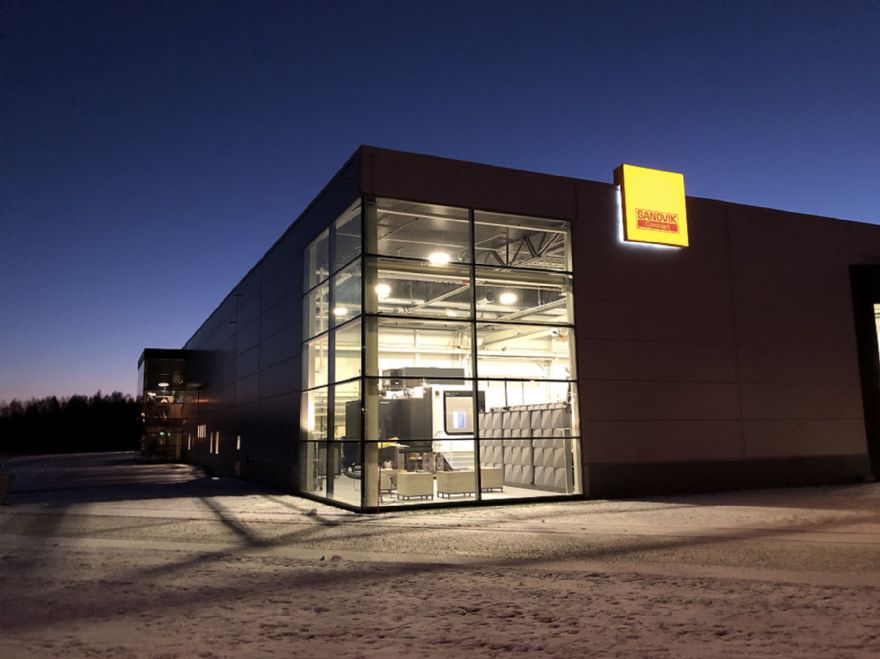
Sweden-based Sandvik Coromant (
www.sandvik.coromant.com) has developed a new 3-D modelling technique that can 3-D print up to 200 plastic face shields in the time traditional methods require to print one. Using stacked model data, the technique can dramatically increase 3-D printing output, in this case assisting in producing face shields for healthcare workers fighting Covid-19. Having made the data available for free, Sandvik Coromant is encouraging other businesses to use this method to assist in face shield production.
The company’s industrial facilities are usually reserved for manufacturing metal powders into engineered components, but it has switched its metalworking expertise and 3-D printing capacity to produce personal protective equipment (PPE) for healthcare workers with some of the organisation’s plastic 3-D printers.
Businesses are already producing 3-D printed face shields, but because 3-D printers are restricted to printing one CAD file at a time, production output has been slow. To solve this problem, engineers at Sandvik Coromant’s Press Tools department have developed a new modelling progress to allow machines to recognise a stack of multiple face shields as one solid CAD file.
Duplicating the 3-D image data of a single face shield, engineers at Sandvik Coromant are able to stack multiple shields on top of each other. Using a dual extruder, the 3-D printer can then be instructed to create structural support between each product — essentially printing a thin string of plastic between each shield. Printing this support in water-soluble material allows the shields to be easily separated once printed.
Sandvik Coromant’s Press Tools division is now able to manufacture 42 plastic face shields per 3-D printer during each production batch — a process which previously took 48hr to manufacture just one face shield. Larger 3-D printers could use this same technique to print up to 200 face shields in a single production batch.
The company hopes that this technique will be adopted by other businesses with access to a 3-D printer as the most-efficient method for producing face shields. In fact, the company has already shared 3-D model data required with Protech, the leading Nordic supplier of 3-D printers from Stratasys. A distributor of 3-D printers for the hobbyist market, has also shared the data with its network.
Christian Dingfors, production engineer at Sandvik Coromant Press Tools, said: “Printing several parts at a time is the optimal method for producing a high volume of face shields when using a 3-D printer. In the ongoing effort to support healthcare workers against Covid-19, we need to contribute to the production of personal protective equipment (PPE) as effectively as possible. That is why Sandvik Coromant wants to share this technique and the necessary imaging data with as many businesses as possible. We want every facility with 3-D printing capacity to get involved.
Mr Dingfors continued: “We encourage any business that has access to a 3-D printer to contact us for guidance on how to deploy this printing technique. We are happy to share the 3-D imaging data with anyone, including small businesses and hobbyists, that want to contribute to this essential cause.”
Having obtained more than 3,000 overhead projector films, several divisions in Sandvik Coromant are now using their 3-D printing capacity to produce face shields. For instance, Sandvik Coromant’s Press Tools Division has halted all non-critical production runs for the 3-D printers it has on site, with 75% of printing capacity now dedicated to producing face shields.
The shields will be donated to hospitals in the Sandviken-Gävle, Gävleborg and Stockholm regions of Sweden, but Sandvik Coromant anticipates the initiative will be replicated globally — not just within Sandvik, but among the larger business community.
Elsewhere, in the USA, when Wally Calayag, a Sandvik Coromant sales territory engineer in California, saw the pain that surgical masks were causing medical professionals at a nearby hospital where his wife works as a nurse, he had an idea.
Armed with a 3-D printer and open source files, he started printing surgical mask extension straps and it wasn't long before he was making deliveries to the hospital to help those on the frontline, and in doing so, encouraging others to join the cause.
André Larsson, R&D Technician at Sandvik Coromant’s Additive Manufacturing Division, said: “Sandvik would never compromise when it comes to keeping employees safe. Right now, we can help protect medical personnel by keeping them safe and able to help those infected with Covid-19. Our lives depend on these medical professionals — and we cannot let their safety be compromised while they are saving lives.”